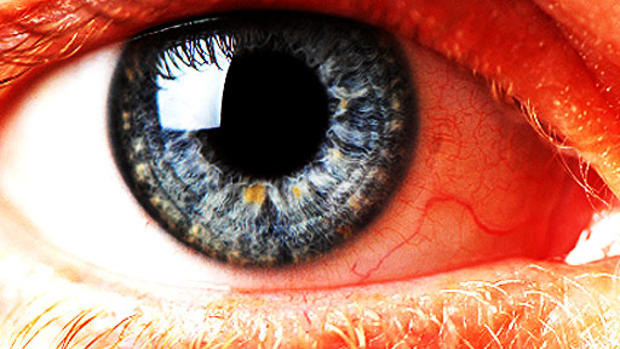Diabetes device tests glucose levels in teardrops
(CBS) Painful skin pricks may become a thing of the past for diabetics. Scientists say they've successfully tested a chemical sensor that measures blood sugar levels not in drops of blood but in teardrops.
PICTURES: 12 scary things your eyes say about your health
The scientists behind the preliminary tests - which used tears from 12 anesthetized rabbits - said in a written statement that "it may be possible to measure tear glucose levels multiple times per day to monitor blood glucose changes without the potential pain from the repeated invasive blood drawing method."
Doctors generally recommend that people with diabetes test their blood sugar (glucose) level several times a day to make sure it is in a safe range. But the pin or lancet used to draw blood causes enough pain to discourage many diabetic from frequent testing. Children, in particular, are often deterred from testing their blood often enough, Dr. Mark E. Meyerhoff, the University of Michigan chemistry professor behind the device, told CBS News.
But the teardrop sensor could change all that for the estimated 26 million Americans who have diabetes as well as hundreds of millions of diabetics around the world.
"This is an incredibly hot area," Dr. George Grunberger, a member of the board of the American Association of Clinical Endocrinologists, told Fox News. "People have been trying to read glucose through skin, through measurements attached on the earlobe. There have been machines on the market that got taken off the market because of unreliability and poor reproducibility."
As Dr. Meyerhoff sees it, diabetics would use a tiny capillary tube to take a tiny volume of tear from the eyes and then transfer it to a small handheld sensor device that would measure the glucose level.
The sensor is still years from being commercially available, Dr. Meyerhoff said. What's more, the sensor would be unlikely to do away with blood testing altogether, as patients would still have to draw blood periodically in order to calibrate the sensor.
The paper was published in the journal Analytical Chemistry.

